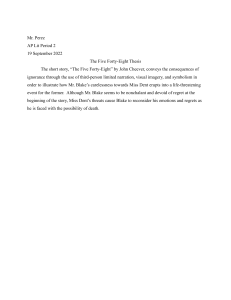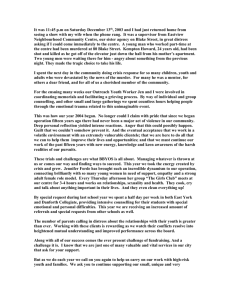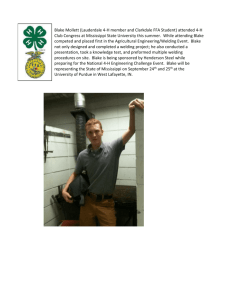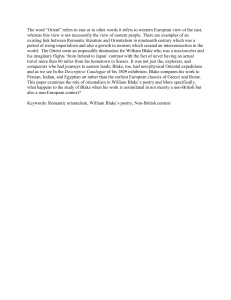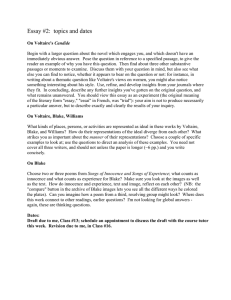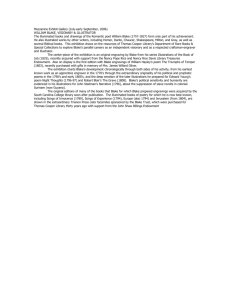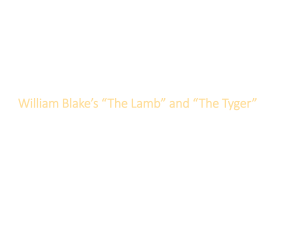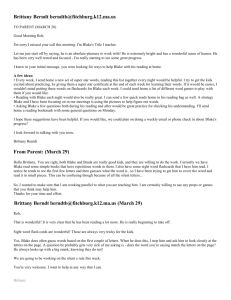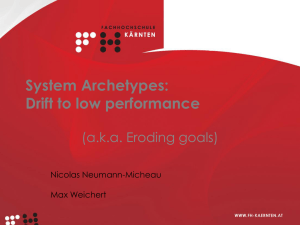Archetypes and Social Commentary
advertisement
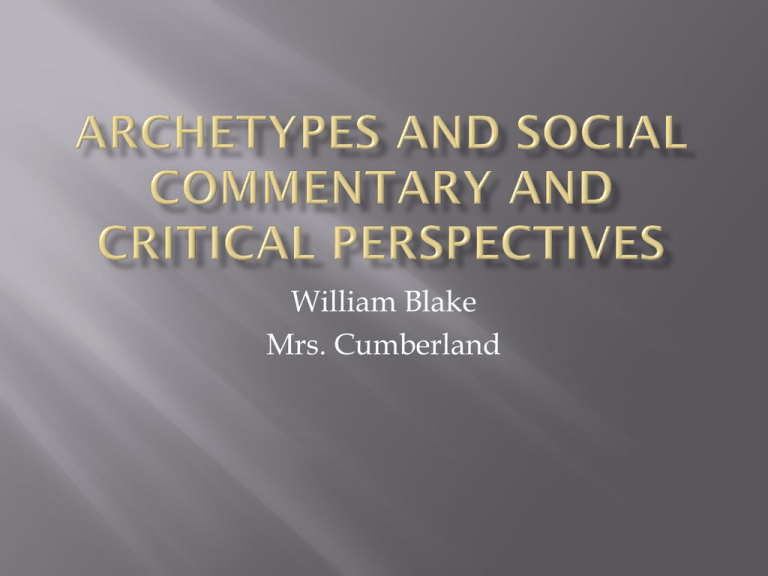
William Blake Mrs. Cumberland Symbols that reveal universal truths Archetypes hold strong emotional power Blake’s poetry is filled with archetypes They helped put his mystical visions into words They consist of plot patterns, character types, and themes that transcend time and culture. Lamb Fire Meaning messenger “my father sold me” Meaning place where human fates are created Angel Meaning innocent Anvil Meaning The baby Jesus Child Meaning Jesus Christ Swaddling bands Meaning Jesus Christ Suggests that Blake wanted to point out the desperate lives of the poor “got with our bags and our brushes to work” Suggests that Blake wanted to highlight the problem of child labor Blake often expressed archetypes in paired poems such as “The Lamb” and “The Tyger” Commenting on social injustices of his time He critiqued events and popular beliefs in his social commentary. Historical and political references support his opinions and add credibility to his writing Criticism of the ills caused by the Industrial revolution and political tyranny A critical perspective is a way of looking at a work of literature. Two types: Archetypal perspective: looking at the universal symbols in the work Images, details, and patterns that seem to have a strong emotional charge and appear across many different cultures Historical perspective: looking at the political, economic, and cultural background of the work
